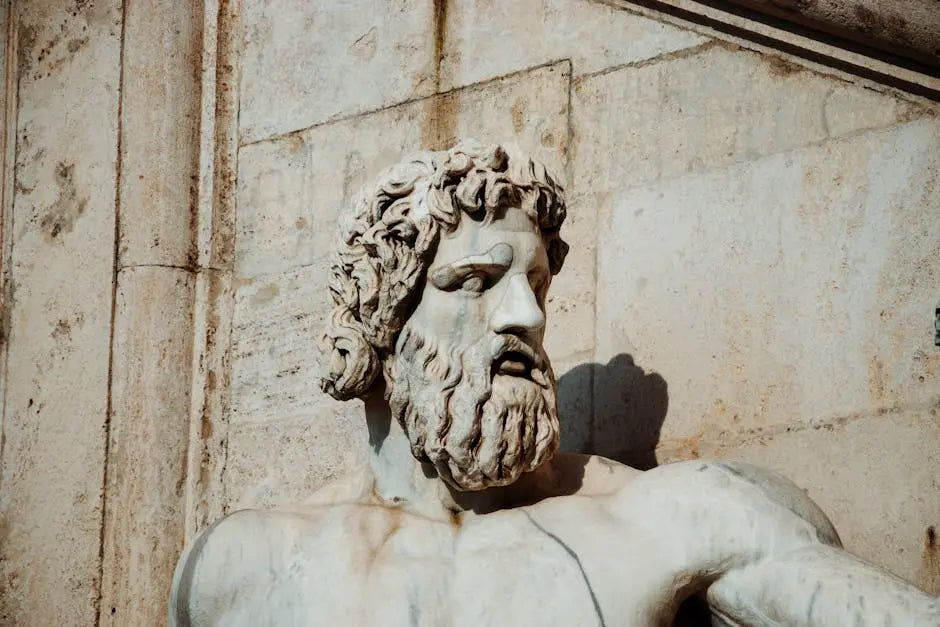My Cart
Your Cart is Currently Empty
FREE SHIPPING ON ALL ORDERS ABOVE $500


Figure sculpture is a timeless art form, embodying the delicate balance between creativity and craftsmanship. By capturing the essence of humanity, it reveals the beauty and complexity of life within the permanence of stone. Join me as we explore the intriguing journey of figure sculpture and how artists breathe life into their creations.
From the earliest civilizations, figure sculpture has played a vital role in cultural expression. Ancient Egyptians and Greeks mastered the art, creating iconic works that continue to influence modern sculpture. The perfection of proportion achieved by the Greeks, as epitomized in their sculptures of gods and athletes, set standards that are still admired today. Their works were not only artistic milestones but also historical records that immortalized their civilization’s ideals and beliefs.
The Egyptian approach was different yet equally fascinating, focusing on monumentality and the eternal. The Great Sphinx and the statues of pharaohs stand as testament to their prowess, characterized by their stoic expressions and idealized forms. In contrast, the Greeks emphasized realism and sought to portray human figures in naturalistic and dynamic poses. This not only established new aesthetic paradigms but also influenced classical art traditions that spread across Europe.
Creating a figure sculpture is a meticulous process that starts with a vision. Artists mold clay models, chisel raw stone, and pay attention to intricate details to bring their ideas to life. The initial stage often involves sketching and creating small scale clay or wax models called maquettes. This enables the sculptor to experiment with composition and depth before tackling the stone itself. Once the design is finalized, the actual carving begins.
The transition from maquette to stone requires both patience and precision. Artists must visualize the final silhouette as they strip away layers, careful not to remove too much material which cannot be replaced. This concept, known as ‘subtractive sculpting,’ demands foresight and experience. Sculptors establish ‘points of reference’ across their medium, guiding them through the intricate process of transforming vision into reality.
Sculptors wield a variety of tools, from traditional chisels and hammers to modern power tools. Each tool is selected specifically to shape the stone and reveal the nuances of the subject. Traditional tools like rasps and rifflers are used for refining details, while polishers bring smoothness to the sculpture’s surface. Modern technology has introduced pneumatic tools and angle grinders, enabling precision and speed that greatly enhance the sculpting process.
The choice of technique depends on the type of stone and the desired outcome. For instance, mallet and chisel work well for marble, while limestone responds better to gouges. Innovative methods such as 3D scanning and digital modeling aid in the planning stages, allowing artists to visualize their concepts before taking on the challenging task of carving with exactness.
A great figure sculpture is one that captures both emotion and movement. Through expertly carved gestures and expressions, sculptors make their subjects appear vibrant and alive. The secret lies in the subtle details—curving a lip, adjusting the gaze, or implying motion through posture. These artistic decisions turn cold stone into a narrative, a snapshot of life.
Emotion is often conveyed through the manipulation of light and shadow, with sculptors intentionally crafting surfaces to play off ambient lighting. This interplay gives the illusion of dynamic action and heartfelt expression that resonates with viewers. The ability to evoke such visceral responses highlights the sculptor’s skill in marrying physical form with emotional depth.
Today, figure sculpture continues to evolve, incorporating new techniques and materials. Contemporary sculptors explore diverse themes, often pushing the boundaries of traditional forms. Material experimentation is at the forefront, with artists using recycled materials, plastics, and resins alongside traditional stone. This diversity reflects a shift from mere representation to commentary on modern life and social issues.
Moreover, the global nature of today’s art world provides sculptors with endless sources of inspiration. Cultural influences blend, resulting in works that are eclectic and intellectually engaging. The fusion of styles seen in modern environmental sculptures speaks volumes about the interconnectedness of today’s society, manifesting in figure sculptures that capture the essence of our time.
The journey of figure sculpture is one that connects artistry with the human experience. By sculpting life in stone, artists not only preserve the beauty of their subjects but also leave a legacy of inspiration. As we admire these works, may we appreciate the dedication, skill, and passion that every artist pours into making these timeless pieces.